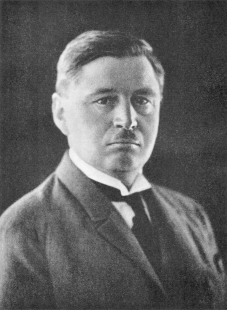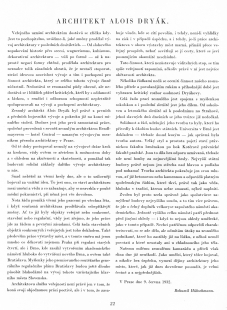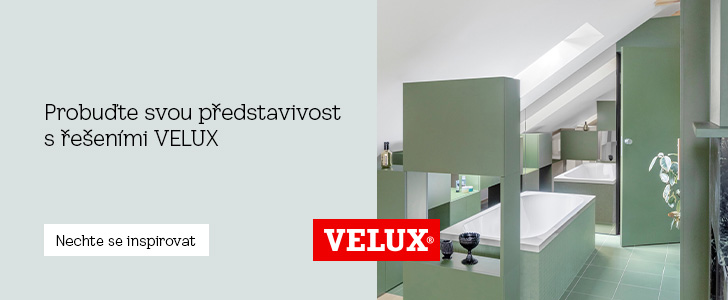
Bohumil Hübschmann: Architect Alois Dryák
Public recognition is rarely afforded to architects. This is understandable when we consider the changes in architectural development over the last few decades. - From stylistic repetitions of history, through Art Nouveau, Wagnerism, Cubism, decorative architecture - the will for form - to the complete negation of desired form, architecture has undergone so many fundamental shifts for the uninitiated that it is not enough to trace them; the ideological continuity of development is lost, along with the understanding of the architect's role, who actively participated in all this development. There is a lack of resonant ground in general, but also a lack of close critical friends who would continuously collaborate on the development and understanding of architecture with dedication and love, as well as expertise and professional ability.
The late architect Alois Dryák was one of the first and foremost fighters for development and progress as early as the end of the last century. To this day, his first independent work, carried out together with the also deceased architect Bendlmayer - the Central Hotel - is recognized as a developmental milestone in the transformation of architecture in Prague.
Since then, the deceased advanced step by step on the developmental path, always with regard to the possibilities of the time and with consideration for experience and reality, thus helping to build solid foundations for further development of architecture in our country.
He may not have chased every contemporary slogan, but he fought all the more fervently for the inner idea. That is what places architecture between art and science and prevents it from descending into mere fashionable experimentation, where anything goes.
The note of order penetrates all his works throughout the years, even when contemporary architecture has undergone the harshest changes. Whether they are public or private projects, construction or regulatory, it is always evident that his work is governed by order and firm principles. A whole series of private and public construction projects bear witness to this. Additionally, especially in urban development, both Prague in the regulation of old districts and Brno, where he profoundly intervened in the creation of new Brno with the establishment of the academic square, have much to thank him for, as well as Bratislava. The ideas of his award-winning competition for the general regulatory plan of Bratislava will continue to positively influence the development of this growing capital of Slovakia for a long time.
The architect's service to the public is not merely in the fact that he performs his commissioned work diligently, but also in that he intervenes wherever he feels called, even when there is no prospect of profit, even in the case of success, and also when his work in the field of urban construction may seem in vain, yet it brings public benefit, as it illuminates paths that appear immediately impassable to the judging eye.
This activity, which leaves no visible traces, is all the more easily forgotten by the public, although it is precisely in this that the architect's greatest selflessness lies.
In a few lines, it is impossible to appreciate the work of our deceased friend, and a critical analysis of Dryák's personality is reserved for more qualified hands and a more opportune time.
A whole series of the deceased's works is connected with Sokol ideology, and even the last Sokol gathering place is his creation. From Sokol halls and the Letná gathering to the last one in Strahov, whose glorious days today his creator did not live to see.
The solidity and order maintaining his creation were what led him to the tasks of state buildings. The university in Brno is proof - albeit still incomplete - of how correct the author's creation was. The grand style and simplicity of conception place the Faculty of Law in Brno alongside Kotěra's Faculty of Law in Prague. These are works that are recognized without dispute, even though there is no pursuit of the latest slogans here. The highest state buildings are not just a roof over one’s head and a floor underfoot! The architect's creation continues only in its language, whether concrete or stone, and corresponds to the valid social orders, which lie, just like science, deeply in the tradition that cannot be erased but must be fulfilled.
He was therefore entirely rightly chosen as a co-creator of the intended building for the Supreme Court, even more rightly so as it is a forefront addition to the grandly initiated academic square. The unity of the higher whole of the square takes precedence over other considerations - even when these are not artistic considerations, as in this case. I do not want to characterize what happened here with an appropriate response, but I reject the attacks on the deceased that struck him while he lay in bed, from which he was not to rise again, and which did not cease even at his cooling body.
To our dear deceased friend and companion, however, slander today will do him no harm. As an artist who fought hard, and not without success, history will define his place in architecture, which, as we can already assess today, is very honorable and one of the foremost.
In Prague, on June 9, 1932.
The late architect Alois Dryák was one of the first and foremost fighters for development and progress as early as the end of the last century. To this day, his first independent work, carried out together with the also deceased architect Bendlmayer - the Central Hotel - is recognized as a developmental milestone in the transformation of architecture in Prague.
Since then, the deceased advanced step by step on the developmental path, always with regard to the possibilities of the time and with consideration for experience and reality, thus helping to build solid foundations for further development of architecture in our country.
He may not have chased every contemporary slogan, but he fought all the more fervently for the inner idea. That is what places architecture between art and science and prevents it from descending into mere fashionable experimentation, where anything goes.
The note of order penetrates all his works throughout the years, even when contemporary architecture has undergone the harshest changes. Whether they are public or private projects, construction or regulatory, it is always evident that his work is governed by order and firm principles. A whole series of private and public construction projects bear witness to this. Additionally, especially in urban development, both Prague in the regulation of old districts and Brno, where he profoundly intervened in the creation of new Brno with the establishment of the academic square, have much to thank him for, as well as Bratislava. The ideas of his award-winning competition for the general regulatory plan of Bratislava will continue to positively influence the development of this growing capital of Slovakia for a long time.
The architect's service to the public is not merely in the fact that he performs his commissioned work diligently, but also in that he intervenes wherever he feels called, even when there is no prospect of profit, even in the case of success, and also when his work in the field of urban construction may seem in vain, yet it brings public benefit, as it illuminates paths that appear immediately impassable to the judging eye.
This activity, which leaves no visible traces, is all the more easily forgotten by the public, although it is precisely in this that the architect's greatest selflessness lies.
In a few lines, it is impossible to appreciate the work of our deceased friend, and a critical analysis of Dryák's personality is reserved for more qualified hands and a more opportune time.
A whole series of the deceased's works is connected with Sokol ideology, and even the last Sokol gathering place is his creation. From Sokol halls and the Letná gathering to the last one in Strahov, whose glorious days today his creator did not live to see.
The solidity and order maintaining his creation were what led him to the tasks of state buildings. The university in Brno is proof - albeit still incomplete - of how correct the author's creation was. The grand style and simplicity of conception place the Faculty of Law in Brno alongside Kotěra's Faculty of Law in Prague. These are works that are recognized without dispute, even though there is no pursuit of the latest slogans here. The highest state buildings are not just a roof over one’s head and a floor underfoot! The architect's creation continues only in its language, whether concrete or stone, and corresponds to the valid social orders, which lie, just like science, deeply in the tradition that cannot be erased but must be fulfilled.
He was therefore entirely rightly chosen as a co-creator of the intended building for the Supreme Court, even more rightly so as it is a forefront addition to the grandly initiated academic square. The unity of the higher whole of the square takes precedence over other considerations - even when these are not artistic considerations, as in this case. I do not want to characterize what happened here with an appropriate response, but I reject the attacks on the deceased that struck him while he lay in bed, from which he was not to rise again, and which did not cease even at his cooling body.
To our dear deceased friend and companion, however, slander today will do him no harm. As an artist who fought hard, and not without success, history will define his place in architecture, which, as we can already assess today, is very honorable and one of the foremost.
In Prague, on June 9, 1932.
Bohumil Hübschmann.
The English translation is powered by AI tool. Switch to Czech to view the original text source.













